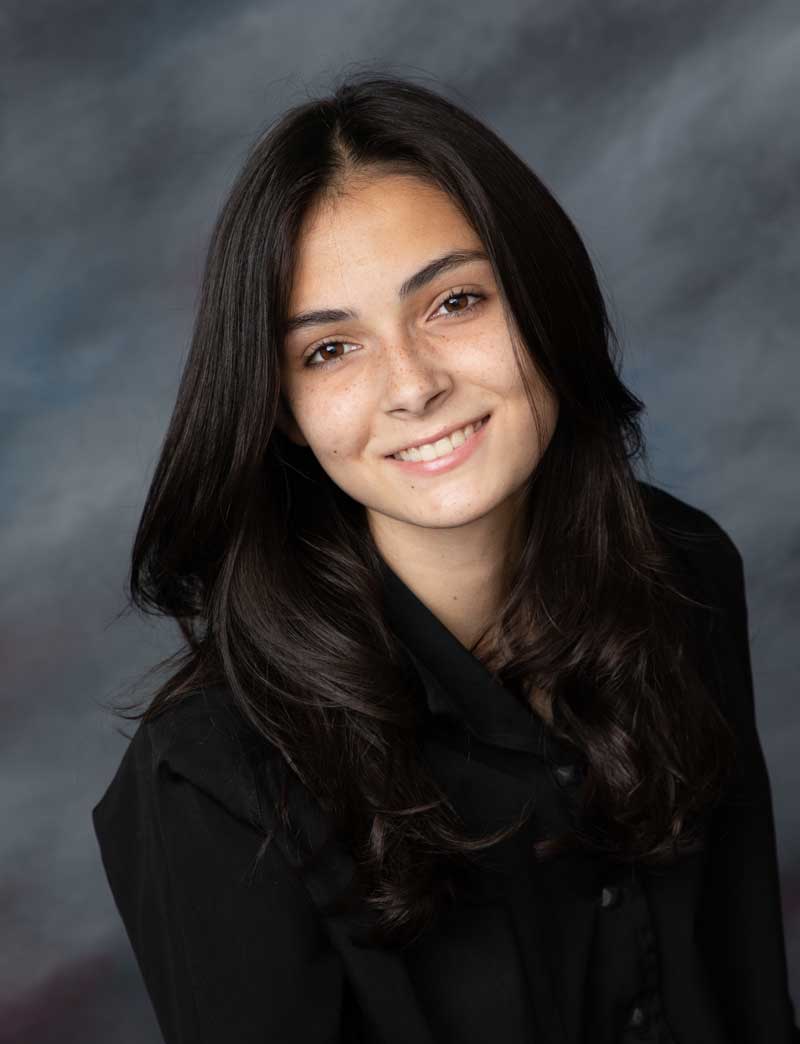





3-D Design
Sophie Kamdar
Canyon Crest Academy|San Diego, California

Untitled|5 x 7 x 10 in.
Idea(s): When I imagined a shoe coming to life, I wanted to create a shoe that had fully mutated.
Material(s) : Shoe, polymer clay, and acrylic paint.
Process(es): I Cut shoe in half glued together, blended the seams w/ polymer and used paint to color match.
Curatorial Note: Student creates a shoe that comes to life. Experimented with a microscopic view of individual sections that create a shoe.


“I imagined a shoe creature coming to life, its laces, fabric, and grommets now the cellular structures of a living organism. In this shoe creature, I questioned what its biological failures would look like- how would tumors, mutations, and genetic irregularities manifest themselves in this inanimate object?”

Student statement
Student
statement
My AP 3-D Art and Design teacher prompted my class to create a few experimental works based on an element or principle of art and design. I chose to focus on texture and sculpted a polymer model of a highly detailed tumor cell. This experimentation, coupled with my interest in biology, inspired me to explore the junction of art and science.
I chose to work with a shoe as my canvas because of how closely related shoes are to the human body. The shoes that we wear every day become extensions of our bodies. Thus, I imagined a shoe coming to life, its laces, fabric, and grommets now the cellular structures of a living organism. In this shoe creature, I questioned what its biological failures would look like - how would tumors, mutations, and genetic irregularities manifest themselves in this inanimate object? Often these abnormalities are viewed from a purely scientific lens, so my work sought to understand them from a different perspective - the artistic.

Sophie Kamdar
Process
I initially imagined a microscopic view of the individual sections that make up a shoe. I sketched images of tumor cells and anatomical mutations for inspiration and experimented by sculpting these in clay and polymer. With these materials, I made a shoelace with a pom-pom tumor, a mutated three-pronged shoelace, and a tumor growing through the shoe's logo. I then zoomed out from this microscopic lens to show the later stages of tumor development. This perspective change led me to create the fully mutated double shoe.
My advice to other AP Art and Design students is to not worry too much about making “good” art. Of course, artistic aesthetics are significant, but I think they can be secondary to making art that tells an interesting story. I recommend that students focus on truly exciting ideas and translate these ideas into visuals that communicate their story and thought processes.
Teacher Statement
Teacher Statement
Kimby Lababit
Because the AP Art and Design course supports inquiry-based personalized learning in the sustained investigation portfolio, I have my students start brainstorming ideas by creating different mind maps for different potential ideas they may want to further investigate through the art making process. I ask that they think of ideas that have a connection to them personally. Sophie has a love of both science and art and through the brainstorming process was able to narrow her idea down in a way that merged the two. She began by wanting to explore and illustrate science, specifically genetic mutations, through her art.

After creating mind maps, students narrow down their ideas even further. I then have students write a short paragraph about their idea and ask that they write their overarching idea as a question rather than a statement. I ask students to think about how different artworks would provide an answer to their question. Through brainstorming and experimentation, Sophie solidified her idea, which questioned how genetic mutations would appear on an inanimate object, her shoe, rather than the cells of a human being. After creating thumbnail sketches and more experimentation with materials, Sophie began exploring her idea through the artmaking process. I stress the importance of practice, revision, and experimentation to my students and remind them that not every idea or artwork will be successful but that this is part of the artmaking process. Students are allowed and encouraged to make changes and revisions to their artwork, as well as refine their question, throughout the year. Sophie and I had continuing conversations throughout the semester about the successes of each piece as well as areas to strengthen or improve upon. This helped her to revise ideas as the semester progressed.
In the end, Sophie’s portfolio came together beautifully, merging the ideas of both science and art. Students were required to create written statements for every piece and discuss how each artwork related to their overarching question. At the end of the year, students condensed these paragraphs down to one or two to create the commentary for their portfolio. With Sophie’s very articulate writing skills, she was able to convey her idea perfectly in writing and, through her mastery level artmaking skills, was able to successfully illustrate this idea visually as well.
Sophie Kamdar














